Recent Posts
Dealing with Water Damage After a Storm
1/4/2024 (Permalink)
Storms can bring heavy rainfall, flash floods, and water leaks, causing significant water damage to homes and businesses. Dealing with water damage can be a daunting and stressful task, but taking immediate action is key to preventing further destruction and minimizing the impact on your property. In this blog, we will discuss essential steps to effectively deal with water damage after a storm, including safety precautions, water removal, drying, and restoration.
Ensure Safety
Prioritize your safety and the safety of others by turning off electrical power to affected areas to prevent electrocution hazards. If standing water is present, avoid direct contact to reduce the risk of contamination. Use personal protective equipment, such as rubber gloves and boots, when handling water-damaged items to minimize exposure to potential health hazards.
Remove Standing Water
Utilize pumps, wet vacuums, or buckets to remove standing water from affected areas. Start with the highest point and work your way down. Open doors and windows to increase ventilation and aid in the drying process. Consider hiring water damage restoration professionals for larger-scale water extraction projects or situations involving contaminated water.
Dry Out the Area
Use fans, dehumidifiers, and air movers to facilitate drying. Aim for maximum airflow to reduce humidity and prevent mold growth. Remove wet carpets, rugs, and furniture from affected areas to prevent further damage and promote faster drying. Remove baseboards, drywall, and insulation if they have been extensively water damaged. This will aid in proper drying and minimize the risk of mold growth.
Salvage and Clean
Salvage items that can be restored. Wipe down furniture, electronics, and other items with clean, dry cloths to remove excess moisture. Dispose of items that cannot be salvaged, such as severely waterlogged furniture or heavily damaged appliances. Use mild detergents or disinfectants to clean and sanitize surfaces that have come into contact with floodwater or contaminated water.
Prevent Mold Growth
Mold can start growing within 24-48 hours after water damage, so it's crucial to take preventive measures. Thoroughly dry affected areas and items to prevent mold spores from taking root. Use mold inhibitors or professional-grade antimicrobial products to treat surfaces and inhibit mold growth. If mold growth is extensive or if you are unsure about proper remediation, consult with a professional mold remediation specialist.
Document the Damage
Take photographs or videos of the water damage for insurance purposes. Document the extent of the damage and any affected items before beginning the cleanup process. Keep detailed records of all expenses related to water damage repairs and restoration for insurance claims.
Seek Professional Help
If the water damage is extensive or if you are unsure of the appropriate steps to take, it is best to consult with professional water damage restoration experts.
Water damage professionals have the experience, equipment, and expertise to thoroughly assess and restore your property, ensuring proper cleanup and preventing long-term damage.
Dealing with water damage after a storm can be challenging, but following these steps will help you effectively address the situation and prevent further destruction. Prioritize safety, remove standing water, dry out the affected areas, salvage and clean items, prevent mold growth, document the damage for insurance purposes, and seek professional assistance when needed. By taking swift action and implementing these measures, you can minimize the impact of water damage and begin the process of restoring your property to its pre-storm condition.
Understanding the Psychological Impact of Fire Damage
11/27/2023 (Permalink)
Experiencing a fire can be a traumatic event that leaves a lasting impact on individuals and communities. Beyond the physical damage and loss, the psychological effects of fire damage are often overlooked. In this blog, we delve into the various ways in which fire can affect the mental well-being of those impacted, highlighting the importance of addressing the psychological aftermath alongside physical restoration.
The Shock and Trauma of the Event
Fire often occurs unexpectedly, leaving individuals in a state of shock and disbelief.
The traumatic experience can lead to intense emotions, including fear, anxiety, and a sense of helplessness.
- Emotional Distress and Grief
- Loss of belongings, cherished memories, and even loved ones can trigger a deep sense of grief and mourning.
- People may experience a range of emotions, including sadness, anger, guilt, and frustration, as they navigate the aftermath of the fire.
- Disruption of Daily Routine and Sense of Security
Fires can upend daily routines and destroy the sense of security individuals have within their homes or communities.
Disturbances to sleep patterns, eating habits, and overall stability can further contribute to emotional distress
Post-Traumatic Stress Disorder (PTSD)
Some individuals may develop symptoms of PTSD after a fire, such as flashbacks, nightmares, and intrusive thoughts. PTSD can significantly impact one's mental health, affecting daily functioning and overall quality of life.
Anxiety and Fear of Recurrence
The fear of another fire occurring can lead to heightened anxiety, making it difficult for individuals to feel safe, even after physical restoration. Certain triggers, such as smoke or loud noises, may evoke distressing memories and intensify anxiety symptoms.
Social Isolation and Withdrawal
Fire damage can create feelings of isolation, as individuals may be hesitant to engage socially due to shame, embarrassment, or a sense of being different. A lack of understanding and support from others may exacerbate feelings of loneliness and withdrawal.
Importance of Psychological Support
Acknowledging and addressing the psychological impact of fire damage is crucial for individuals and communities to heal and recover fully.
Encouraging access to mental health resources, support groups, and counseling can provide individuals with the necessary tools to cope and rebuild their lives.
Fire damage goes beyond physical destruction; it deeply affects individuals' mental and emotional well-being. Understanding the psychological impact is essential in providing comprehensive support during the recovery process. By recognizing the various ways in which fire can impact individuals, we can prioritize mental health resources and foster healing, helping those affected restore not only their physical spaces but their sense of security and peace of mind as well.
The Dangers of Mold in Your Home: Understanding and Managing the Issue
10/31/2023 (Permalink)
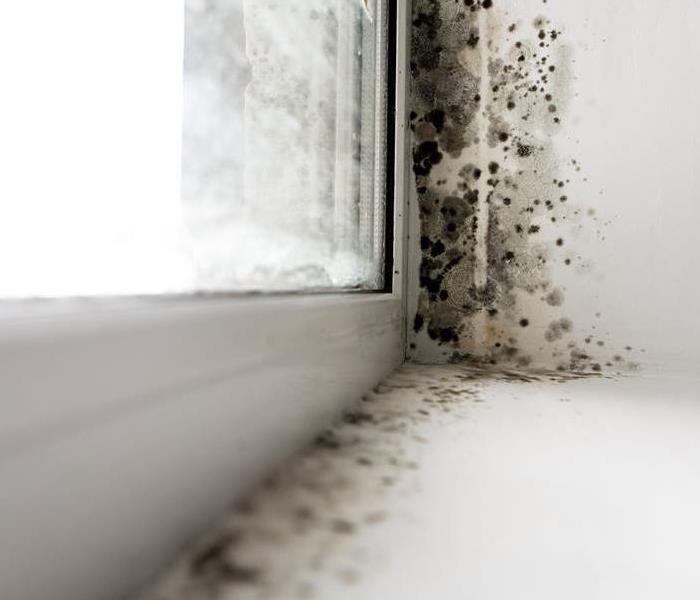 Understanding the potential dangers of mold is important for proactive management in your home or business.
Understanding the potential dangers of mold is important for proactive management in your home or business.
Mold growth in homes is a common concern that should be addressed promptly. In this blog, we will explore the various aspects of mold and dangers in your home. By understanding the potential dangers of mold and learning how to effectively manage it, you can safeguard your home and maintain a clean and comfortable living environment.
Structural Damage
Mold can cause significant damage to the structure of your home. It thrives in moist environments and can gradually deteriorate various materials such as wood, drywall, and insulation. Over time, this can weaken the structural integrity of your home and result in costly repairs. Understanding the potential for structural damage helps motivate prompt action to address any mold issues and prevent further harm to your property.
Impact on Indoor Air Quality
Mold can affect the quality of the air inside your home. As mold spores can become airborne, they can be inhaled and may trigger allergic reactions or respiratory issues. This can be particularly problematic for individuals with preexisting respiratory conditions. Recognizing the potential impact on indoor air quality emphasizes the importance of managing mold growth swiftly and effectively.
Unpleasant Odors and Aesthetics
The presence of mold often results in musty odors that can permeate your home. These odors can be persistent and unpleasant, impacting your overall living environment. Mold discoloration can also be unsightly and cause deterioration of surfaces, leading to a decline in aesthetic appeal. By addressing mold promptly, you can eliminate these unpleasant odors and preserve the visual appeal of your home.
Contamination and Spread
If left unaddressed, mold can spread and contaminate various areas of your home. This can occur through the release of mold spores, which can settle on surfaces and create new growth areas. As mold can multiply rapidly, timely intervention is crucial to prevent extensive contamination. Proactive management and prevention measures can help contain mold growth and minimize the risk of it spreading throughout your home.
Effective Mold Management
To effectively manage mold growth, it is important to address any sources of moisture in your home. Fixing leaks, improving ventilation, and controlling humidity levels are essential steps. Regularly inspecting and cleaning areas prone to moisture, such as bathrooms and basements, can help identify and prevent mold growth. If significant mold contamination is present, professional assistance may be required for thorough remediation.
Peace of Mind and Comfort
Managing mold growth in your home provides peace of mind and enhances overall comfort. Knowing that your home is free from mold helps alleviate concerns about potential damage and ensures a healthier living environment. By actively addressing mold issues and implementing preventive measures, you can create a space where you and your family can feel safe and comfortable. A mold-free home promotes a sense of well-being, allowing you to fully enjoy the warmth and sanctuary of your living space.
Understanding the potential dangers of mold growth in your home is important for proactive management. By addressing mold issues promptly and taking preventative measures, you can protect the structural integrity of your home, maintain indoor air quality, and uphold a visually appealing and comfortable living environment for you and your family.
Water Damage and Homeowners Insurance: Navigating the Claims Process
10/18/2023 (Permalink)
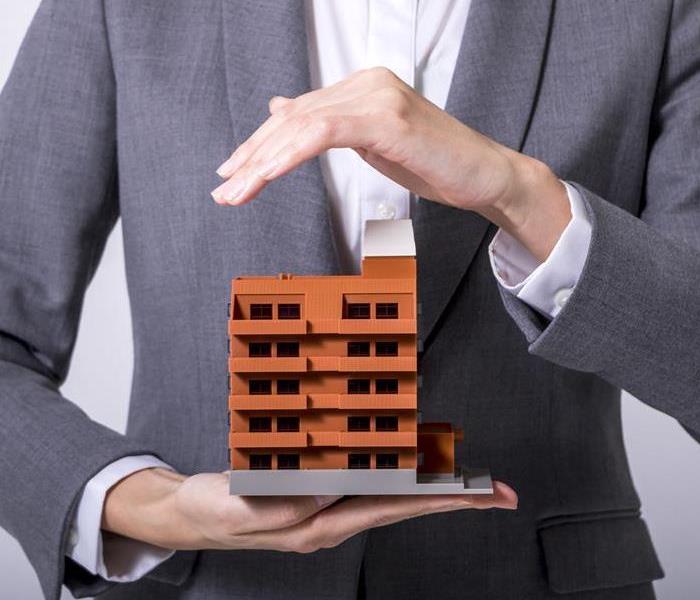 Understanding what your insurance policy covers incase of a restoration emergency is important to navigate the claims process.
Understanding what your insurance policy covers incase of a restoration emergency is important to navigate the claims process.
Homeowners insurance is designed to protect your home in the event of unforeseen damage, including damage from water. Water damage can be a costly and stressful experience, and it's essential to understand the ins and outs of your insurance policy and the claims process to ensure you receive the coverage you need. In this blog post, we'll discuss how homeowners insurance covers water damage, what steps to take when filing a claim, and helpful tips to navigate the claims process.
Understanding Water Damage Coverage in Homeowners Insurance
Homeowners insurance typically covers water damage that results from "sudden and accidental" events, such as burst pipes, severe storms, or an overflowing washing machine. However, coverage can vary depending on what particular insurance policy you hold. It's crucial to review your policy and understand the extent of your coverage to avoid any surprises in the event of water damage.
Steps to Take When Filing a Water Damage Insurance Claim
First and foremost, assess the extent of the water damage to your property. Take pictures and document the damage as thoroughly as possible. This will help when filing a claim and serve as evidence of the extent of the damage.
- Contact Your Insurance Provider
Contact your homeowner's insurance provider as soon as possible after a water damage event occurs. Provide them with details of the damage, including the cause, when it happened and the extent of the damage.
- Provide Additional Information
Your insurance provider will likely need additional information to process your claim. Be prepared to provide documentation of your insurance policy, including proof of ownership and any applicable receipts for repairs.
Mitigation refers to any actions taken to prevent further damage to your home after the initial water damage event occurred. For instance, if possible, shut off the water supply or remove excess water. Keep all receipts for materials and services rendered for mitigation as they could be factored into your insurance coverage.
Once you've filed your claim, an adjuster from your insurance provider will visit your home to assess the damage. Work with them to provide access to your property and the necessary documentation, including estimates for repairs and receipts.
- Review the Settlement Offer
After the adjuster inspects the damage, your insurance company will offer a settlement based on your policy's coverage. Review the settlement offer carefully to ensure it covers all the damages. Be prepared to negotiate, ask questions, and adjust the settlement if needed.
Helpful Tips for Navigating the Claims Process
- Take pictures and document the extent of the damage.
- Contact your insurance company immediately after the damage occurs.
- Keep receipts for any mitigation that occurs and any other expenses related to the claim.
- Be prepared to provide documentation of your insurance policy, such as proof of ownership and policy numbers.
- Work with the adjuster and ask questions to ensure you understand the coverage of your policy and the settlement offer.
In conclusion, understanding the coverage and claims process of your homeowner's insurance policy is essential in the event of water damage. By following the steps noted above and working closely with your insurance provider, you can navigate the claims process successfully and receive the coverage you need to repair and restore your home.
Recovering Your Landscaping After Storms
9/28/2023 (Permalink)
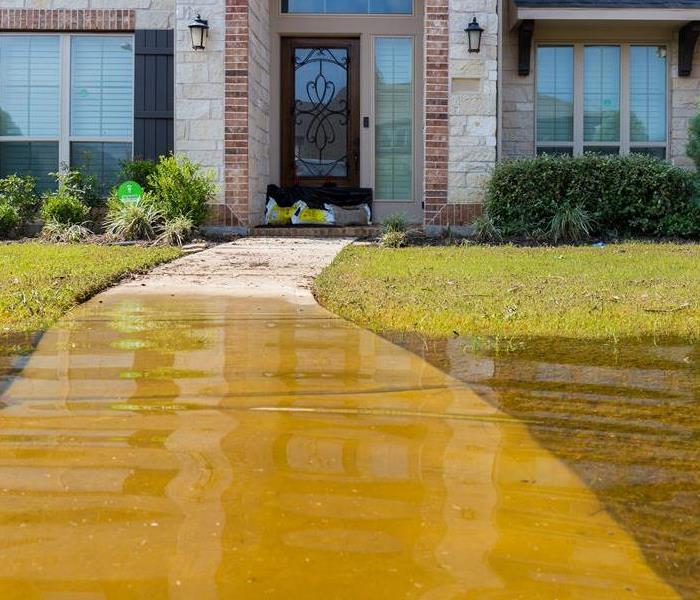 Recovering your landscaping after a storm is possible. Contact SERVPRO for professional assistance with recovering your landscaping properly.
Recovering your landscaping after a storm is possible. Contact SERVPRO for professional assistance with recovering your landscaping properly.
The South Central region is known for its beautiful landscapes, including lush gardens, towering trees, and manicured lawns. However, storms in the area can cause significant damage to your landscaping, leaving it in disarray and in need of recovery. In this blog post, we will discuss how to recover your landscaping after storms in the South Central region.
Assess the Damage
Before you begin any landscaping recovery efforts, it's essential to assess the damage caused by the storm. Inspect your property for any fallen trees or branches, damaged landscaping features, and eroded soil. Evaluate the structural integrity of any outdoor structures, like gazebos or pergolas, and check for any safety hazards.
Once you have assessed the damage, make a plan for recovery. Consider which tasks can be handled by yourself or your landscaping team and which require professional attention. Set reasonable goals and prioritize your efforts based on the severity of the damage. Make an inventory of any materials and equipment you will need and ensure you have everything required before you start.
Remove Debris
One of the first steps in landscaping recovery is to remove any debris accumulated in your lawn or garden. This may include fallen branches, damaged plant material, rocks, and other debris. Discard any damaged or dead plants as they are unlikely to recover and could spread disease to healthy plants. Remove any plant debris that is around the base of trees or shrubs to prevent fungal decay.
Storms can cause significant soil erosion, which can impact the health of your grass and plants. Rebuilding soil is an essential part of landscaping recovery. Consider adding a layer of compost or organic matter to help replenish nutrients and improve soil structure. This will also promote healthy plant growth, reduce soil compaction, and prevent future erosion.
Prune Trees and Shrubs
Strong winds and heavy rain can cause trees and shrubs to become overgrown or damaged. Pruning can help these plants recover and promote healthy growth. Regular pruning will help remove any damaged or diseased growth, improve air circulation, and keep your trees and shrubs healthy.
If any of your landscaping was significantly damaged, consider replacing it with new plants. Choose hardy, drought-tolerant species that can resist the harsh weather conditions of the South Central region. Be sure to plant new landscaping in well-draining soil with plenty of compost or fertilizer so that they can thrive.
Monitor Watering Carefully
After a storm, many homeowners want to help their plants recover by overwatering them. This can actually do more harm than good. When watering new or damaged plants, care must be taken to allow for adequate drainage. Before watering, check that the top few inches of soil are dry to avoid overwatering and check the weather forecast to avoid watering during rainy days.
If the damage to your landscaping is extensive, you may want to seek professional assistance. A landscape professional can help you assess the damage, diagnose any plant diseases or infestations, and provide advice on the best way to restore your landscaping. They can also provide critical tips on enhancing the landscape's resilience against future storms.
Recovering your landscaping after storm damage is possible. By assessing the damage, making a plan, removing debris, rebuilding soil, pruning trees and shrubs, planting new landscaping, monitoring watering, and seeking professional assistance, you can restore the beauty of your outdoor spaces. Landscaping recovery takes time, effort, and patience, but the resulting healthy and thriving landscape will be worth it.
Top Tips to Ensure a Safe and Effective Grill Cleaning Routine
8/19/2023 (Permalink)
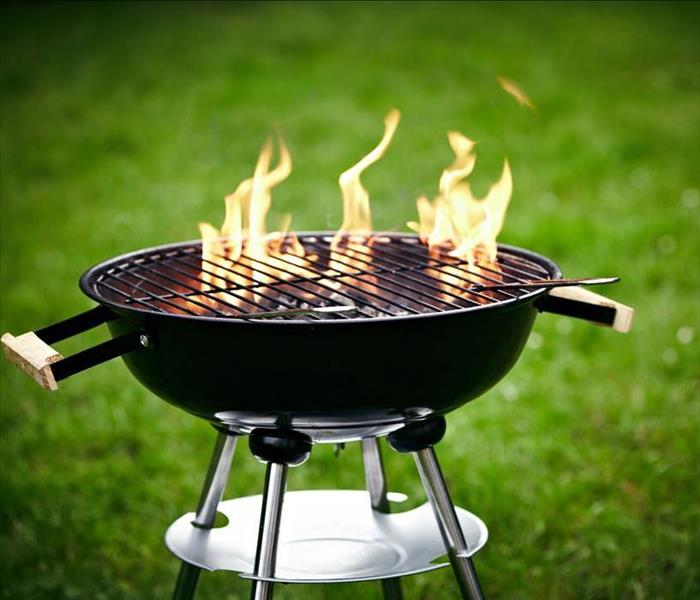 Maintaining a safe and effective grill cleaning routine is vital for the longevity of your grill and the safety of your cooking experience.
Maintaining a safe and effective grill cleaning routine is vital for the longevity of your grill and the safety of your cooking experience.
Grilling season is here, and as a homeowner, you're probably excited to fire up your grill for some outdoor culinary delights. But before you start cooking up those mouthwatering meals, it's essential to prioritize grill cleaning safety. A well-maintained grill not only enhances the taste of your food but also ensures a safe cooking experience for you and your loved ones. In this blog, we'll share valuable tips to help you establish a safe and effective grill cleaning routine. Let's dive in!
Protective Gear Comes First
When tackling grill cleaning, safety should be your top priority. Before you begin, ensure you have the right protective gear. Wear heat-resistant gloves to shield your hands from hot surfaces and prevent burns. Additionally, don't forget to wear safety goggles to safeguard your eyes from debris and cleaning agents.
Wait for the Grill to Cool Down
One of the most common mistakes homeowners make is attempting to clean a hot grill. Allow your grill to cool down completely before starting the cleaning process. A hot surface can cause severe burns and make it challenging to handle cleaning tools effectively.
Disconnect Propane Tanks or Power Sources
If you have a gas grill, remember to disconnect the propane tank before cleaning. Similarly, if your grill is electric, unplug it from the power source. This step ensures that no accidental ignition occurs while you clean the grill.
Use the Right Cleaning Agents
Choosing the right cleaning agents can make a significant difference in the effectiveness of your grill cleaning routine. Avoid using harsh chemicals that may leave harmful residues on your grill grates. Instead, opt for biodegradable, eco-friendly cleaners or make your own DIY cleaning solution using baking soda and vinegar.
Clean the Grill Grates Thoroughly
The grill grates are the heart of your grill and need proper cleaning to ensure food safety and even cooking. Start by preheating the grill for a few minutes to loosen the stuck-on food particles. Then, use a grill brush with firm bristles to scrub the grates thoroughly. For a deeper clean, soak the grates in warm soapy water and scrub away any remaining residue.
Mind Your Surroundings
Cleaning your grill outdoors is the best practice to avoid indoor fire hazards. Always ensure you're in a well-ventilated area away from flammable materials, like dry leaves or wooden structures, while cleaning your grill. This precaution will reduce the risk of accidental fires.
Check Gas Lines for Leaks
For gas grills, take a moment to inspect the gas lines and connections for leaks before use. A simple solution of soapy water applied to the connections can reveal any gas leaks through the appearance of bubbles. If you detect a leak, promptly repair or replace the affected parts before using the grill.
Maintaining a safe and effective grill cleaning routine is vital for the longevity of your grill and the safety of your cooking experience. By following these tips, you can ensure that your grill remains in top-notch condition while minimizing potential hazards. Remember, a well-cleaned grill not only brings out the best flavors in your food but also provides a safe and enjoyable grilling experience for all. Happy grilling!
5 Tips to Prevent Mold Growth in Your River Oaks Bathroom
5/16/2023 (Permalink)
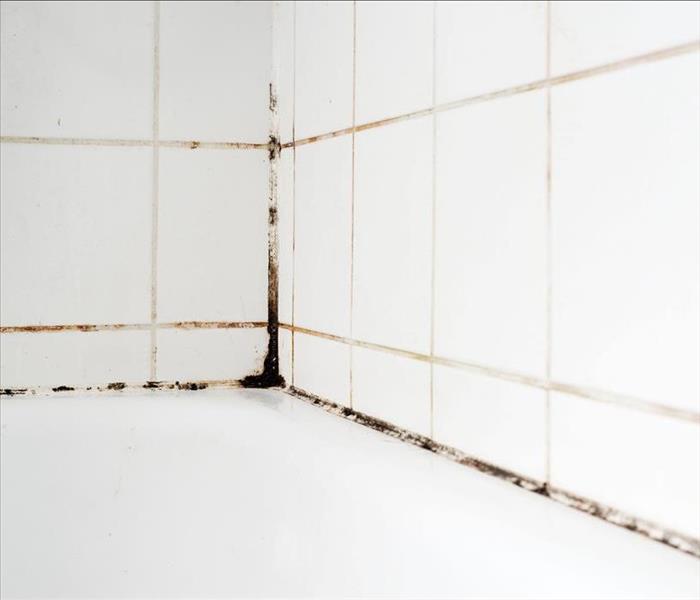 If you do notice mold growth in your bathroom, contact our SERVPRO of River Oaks team, immediately to address the issue and prevent further damage.
If you do notice mold growth in your bathroom, contact our SERVPRO of River Oaks team, immediately to address the issue and prevent further damage.
As disaster restoration experts, we have seen the damage that mold growth can cause in homes. Mold is a type of fungus that can grow in damp and humid areas, such as bathrooms. Not only can it cause structural damage to your home, but it can also lead to unsightly stains and odors. In this blog post, we'll share some tips on how to prevent mold growth in your home bathroom.
Proper ventilation
Bathrooms are typically one of the most humid areas in a home, due to the use of hot water for showers and baths. This humidity can create a perfect environment for mold growth. To prevent this, it's essential to have proper ventilation in your bathroom. This can be achieved by installing a ventilation fan or opening a window during and after showering. This will help to remove excess moisture from the air and prevent mold from growing.
Regular cleaning
Regular cleaning is crucial in preventing mold growth in your bathroom. Be sure to wipe down surfaces such as shower walls, tiles, and bathtub after each use. Use a solution of water and vinegar or a non-toxic bathroom cleaner to clean the surfaces thoroughly. Make sure to clean areas that are not visible, such as the back of the toilet and under the sink. Additionally, be sure to clean your bathroom rugs regularly, as they can trap moisture and become a breeding ground for mold.
Fix leaks promptly
Leaks in your bathroom can create a damp environment and promote mold growth. Be sure to fix any leaks promptly, whether it's a dripping faucet or a leaky toilet. Check for leaks regularly, including under the sink and around the shower and bathtub. If you do find a leak, be sure to fix it as soon as possible to prevent mold growth.
Use mold-resistant products
When renovating your bathroom or replacing fixtures, consider using mold-resistant products. This can include mold-resistant drywall, paint, and caulk. These products are designed to resist moisture and prevent mold growth.
Keep the bathroom dry
Keeping your bathroom dry is key in preventing mold growth. After showering or bathing, use a squeegee to remove excess water from the shower walls and bathtub. Make sure to dry off any surfaces that are wet, such as the shower curtain and bathroom floor. You can also use a dehumidifier to remove excess moisture from the air and keep your bathroom dry.
Prevent Mold Growth in Your Bathroom with These Simple Tips
In conclusion, mold growth in your bathroom can be prevented with proper ventilation, regular cleaning, prompt leak repairs, mold-resistant products, and keeping the bathroom dry. By following these tips, you can help prevent mold growth and keep your bathroom clean and healthy. If you do notice mold growth in your bathroom, contact a disaster restoration company, such as our SERVPRO of River Oaks team, immediately to address the issue and prevent further damage to your home.
5 Essential Safety Tips for Dealing with Natural Gas Leaks in Your Home or Business
4/15/2023 (Permalink)
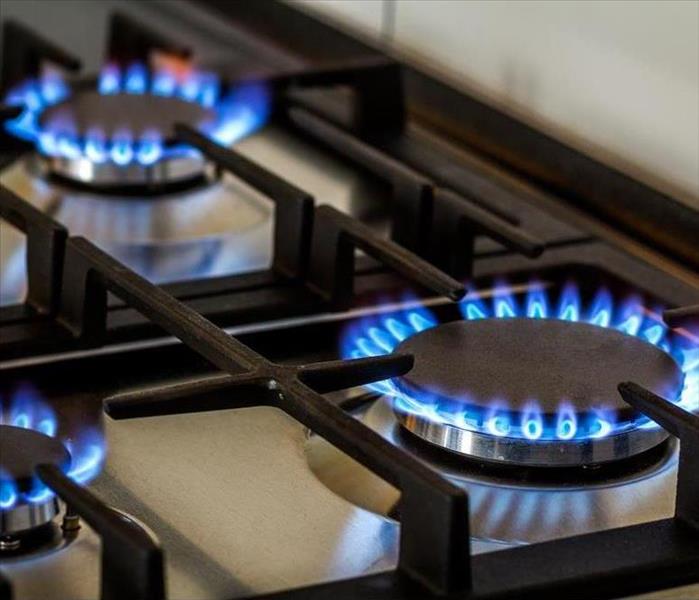 If you smell natural gas in your home or business, it is important to follow these safety tips.
If you smell natural gas in your home or business, it is important to follow these safety tips.
Natural gas is a commonly used energy source in many homes and businesses. However, it can also pose a serious safety risk if not handled properly. One of the most significant warning signs of a gas leak is the smell of natural gas. Here are some safety tips to keep in mind in case you smell natural gas in your home or business:
1. Leave the area immediately
If you smell natural gas, the first thing you should do is evacuate the building. Do not use any electrical appliances or light switches, as these can ignite the gas and cause an explosion.
2. Call for help
Once you are safely away from the building, call your gas company or emergency services to report the potential gas leak. They will be able to send someone to assess the situation and take the necessary precautions. It is important to remember that gas leaks are a serious safety concern, so it is crucial to call for help as soon as possible.
3. Do not attempt to fix the issue yourself
It can be tempting to try to fix the issue yourself, but this can be extremely dangerous. Natural gas is highly combustible, and even a small spark can ignite the gas and cause an explosion. It is best to leave the gas leak to the professionals who have the proper equipment and training to handle the situation safely.
4. Open windows and doors
If it is safe to do so, open windows and doors to ventilate the area. This can help to reduce the concentration of gas and minimize the risk of an explosion. It is important to note that you should only do this if you are safely away from the building and have already called for help.
5. Stay away from the building until it is deemed safe
Once you have evacuated the building and called for help, it is important to stay away from the building until it is deemed safe to re-enter. This may take some time, as the gas company or emergency services will need to assess the situation and take the necessary precautions. Do not re-enter the building until you have been given the all-clear, as there may still be a risk of explosion or other safety hazards.
In conclusion, natural gas is a valuable energy source, but it can also pose a significant safety risk if not handled properly. If you smell natural gas in your home or business, it is important to follow these safety tips to ensure the safety of yourself and others. Remember, when in doubt, always err on the side of caution and call for help.
Overflowed Toilet? Here's What You Need to Do to Minimize the Damage
3/15/2023 (Permalink)
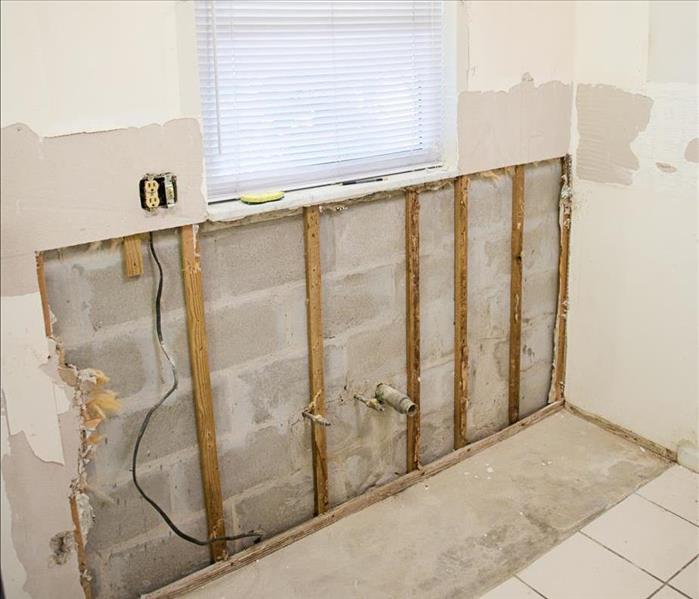 Whether it's due to a clogged toilet or a malfunctioning valve, a toilet overflow can cause significant water damage to your home or business.
Whether it's due to a clogged toilet or a malfunctioning valve, a toilet overflow can cause significant water damage to your home or business.
A toilet overflow can be a messy and stressful situation for any homeowner. Whether it's due to a clogged toilet or a malfunctioning valve, a toilet overflow can cause significant water damage to your floors, walls, and furniture. In this blog, we will discuss what to do in the event of a toilet overflow.
Toilet overflows can happen due to a variety of reasons, ranging from minor issues to more significant problems. One common cause of a toilet overflow is a clog in the pipes or drain. This can be caused by flushing items that should not be flushed down the toilet, such as feminine hygiene products, baby wipes, or excessive amounts of toilet paper. Another cause of toilet overflow is a malfunctioning valve, which may not properly regulate the water flow into the toilet bowl. Other issues that can cause a toilet overflow include a damaged sewer line, a blocked vent stack, or a damaged flapper valve. It is important to address the cause of the toilet overflow to prevent future incidents and avoid water damage to your home.
Step 1: Stop the Water Flow
The first thing you should do in the event of a toilet overflow is to stop the water flow. Locate the valve behind the toilet and turn it off to stop the water supply. If you can't find the valve, turn off the main water supply to your home. This will prevent any additional water from flowing into the toilet and causing more damage.
Step 2: Protect Yourself
Toilet water can contain bacteria and other harmful microorganisms. It is important to protect yourself by wearing gloves and other personal protective equipment. If the overflow is severe, you should also consider wearing a mask to avoid inhaling any harmful particles.
Step 3: Remove Excess Water
Using a wet/dry vacuum or towels, remove as much excess water as possible. Start by soaking up the water on the floor and then move on to the walls and furniture. Be sure to dispose of any towels or rags that come into contact with the contaminated water.
Step 4: Clean and Disinfect
After removing the excess water, it's time to clean and disinfect the affected area. Use an appropriate cleaning solution to disinfect the surfaces that have come into contact with the contaminated water. Make sure to follow the manufacturer's instructions and wear protective gloves while cleaning.
Step 5: Dry the Area
After cleaning and disinfecting the area, it's important to dry it as quickly as possible to prevent mold growth. Use fans and dehumidifiers to dry out the affected area. Open windows and doors to increase ventilation and reduce humidity.
Step 6: Call a Professional
If the overflow is severe or you are unable to handle the situation on your own, it's important to call a professional restoration company. They have the expertise and equipment to handle the situation and prevent further damage. Companies like SERVPRO of River Oaks can assist you with all your water damage cleanup needs!
In conclusion, a toilet overflow can be a stressful and messy situation. However, by following these steps, you can minimize the damage and prevent the growth of harmful microorganisms. Remember, if the overflow is severe, it's always best to call a professional restoration company to handle the situation.
Be Prepared for A Water Damage Emergency
2/13/2023 (Permalink)
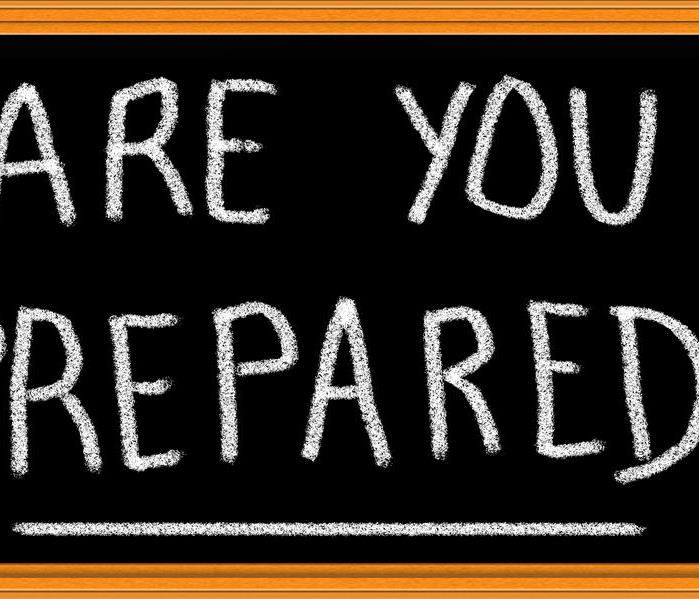 This blog will help you prepare for the unexpected.
This blog will help you prepare for the unexpected.
If you've ever experienced a flooding or water damage emergency, you know how important it is to be prepared. When you're caught off-guard, it can be hard to know who to call and what steps to take next. This blog will help you prepare for the unexpected so that when there's an emergency, you'll be ready with a plan of action in place.
Choose the Right Insurance
You may be wondering whether you need insurance and, if so, how to choose the right policy. Insurance is a good idea because it can help you get back on your feet after an emergency has occurred. When you have water damage and severe flooding in your home or business, insurance can help pay for damages by covering the cost of repairs or paying for temporary housing.
Document your valuables
After a water loss, take photos of your valuables and all areas of the home that have been damaged by water, including closets and cabinets. Take photos of any clean-up processes that are being done to restore your home to its preloss condition. It is always a good idea to document all damage and cleanup processes for your insurance company. Document all expenses to ensure you get reimbursement for your insurance if needed.
Protect your Property
If you have a basement, it is vital that you take every precaution to ensure your property doesn't sustain damage during a flood. The following suggestions will provide some ways to protect your home:
- Install a dehumidifier to remove moisture from the air. If there is already water in your basement and the humidity level is above 60%, it's important that you get the humidity level down as quickly as possible by using a dehumidifier in combination with other methods.
- Use fans to circulate air throughout your property. This will prevent mold growth and help dry out any dampness that might still be present after using the dehumidifier below ground level.
- Keep a bucket at hand in case of leakage when installing new appliances such as washing machines or dishwashers which may cause flooding if not installed correctly!
- Use a sump pump. This will drain excess water from basements before there is a chance too much damage has been done.
Emergency Food & Supplied
Have nonperishable food stored in case of an emergency. Always have bottled water and first aid kits to ensure you have the right things in case of an injury in an emergency situation. It is also a good idea to have blankets and extra clothing in all in a secure place.
Having a plan in place in case of any future water damage emergencies and protecting your property in the event of one is crucial to keeping your family safe. If you’re interested in adding a little more protection to your home, consider reaching out to your insurance company and ensure you have a plan and safety items in place in case of an emergency.

 24/7 Emergency Service
24/7 Emergency Service







